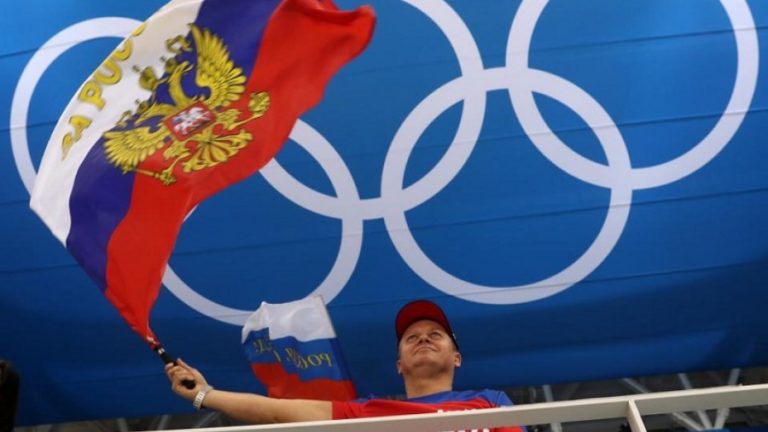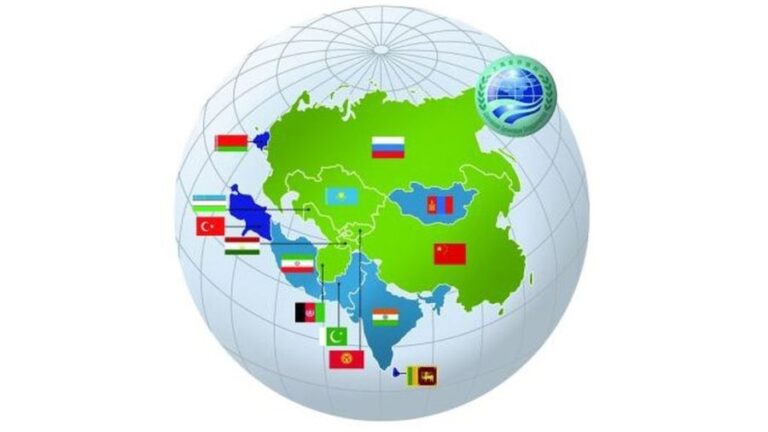The Korean Crisis, the US’ Next Phase of Pan-Eurasian Containment
The security situation has markedly deteriorated on the Korean Peninsula in recent days following the North’s latest missile test, which Pyongyang antagonistically said was a drill for striking US bases in Japan in response to the latest US-South Korean military exercises that it rightly views as a sign of hostility.
These surprise launches prompted the Pentagon to speed up its planned deployment of the THAAD anti-missile system to South Korea, which has drawn the immediate ire of Russia and China who previously warned that it would set the precedent for undercutting their nuclear second-strike deterrent and spy on their territories.
North Korea’s latest moves have also led to talk in Japan for a “first-strike option” to complement Tokyo’s militant reinterpretation of its post-war (supposedly) pacifist constitution. Not to be outdone, the Trump Administration ominously reiterated that “all options are on the table”, which Reuters reports could include “a return of U.S. nuclear weapons to South Korea, and even pre-emptive air strikes on North Korean missile installations.” China has frantically sought to cool down the dangerously rising temperatures on the peninsula and kick start a new round of negotiations by wisely calling for the dual suspension of the North’s nuclear and missile tests in exchange for the US and South Korea putting their joint military exercises on hold.
Neither side, however, seems ready to follow Beijing’s advice, thus running the risk that tensions will only continue to rise for the foreseeable future. This can’t help but work to Russia and China’s overall strategic detriment since the leading Eurasian Great Powers can ill afford for the US to open up yet another containment front against them. On the upside, however, this would serve to strengthen the already rock-solid Russian-Chinese Strategic Partnership and accelerate Moscow and Beijing’s previously stated joint efforts to confront THAAD, though both of them are at a loss for how to properly respond to their wayward and increasingly reckless North Korean partner.
High Stakes
All of the actors in Northeast Asia have significant stakes in the outcome of the Korean Crisis, not least of which is that they’d all like to avoid the worst-case scenario of a nuclear war. Here’s a brief look at the interests and agendas that the exclusively Asian countries are pursing, followed later by an examination of the US and Russia’s:
North Korea:
Pyongyang has the long-term goal of reunifying the Korean Peninsula under communist leadership, though its short-term motivations are more directly geared towards countering US-South Korean belligerence in staging their inciting war games (which this year happen to be the largest-ever) so close to the DMZ. The North’s nuclear and missile tests are muscle flexing aimed at showing the US that it will not fall victim to a Yugoslav-Iraqi-Libyan-style regime change war, but its predictable knee-jerk reactions feed into US strategy by gifting Washington the excuse for THAAD and other expected future deployments which are tactically much more about subverting Russia and China than North Korea.
South Korea:
Just like the North, the South also wants to reunify the peninsula, albeit under capitalist leadership, and its latest moves are responses to what it perceives as (and is led by the US to believe is) the “North Korean” threat, ignorantly unaware of how its own actions play into and actually started this whole escalation cycle in the first place. In regional terms, South Korea endeavors to remain the pivotal economy wedged between its larger Chinese and Japanese neighbors, ideally retaining respectable and positive relations with each, but the country is inadvertently endangering its pragmatic and profitable high-level ties with China because of THAAD and strategically converging with Japan despite Seoul’s historical-territorial disputes with Tokyo (as per the US’ envisioned Northeast Asian NATO plans).
Japan:
This archipelago country hosts the most US troops anywhere in the world at approximately 50,000 and is a key component of the Pentagon’s “Pivot to Asia”. The US and the Abe government aspire to help Japan return to its World War II-era sphere of influence in East and Southeast Asia in order for Tokyo to become Washington’s premier “Lead From Behind” partner in the Asia-Pacific. In pertinence to the problems on the Korean Peninsula, Japan plays the role of an indirect antagonist by giving the US an “unsinkable aircraft” carrier for deploying ever more THAAD-like systems under the cover of ‘responding’ to North Korea but in reality to undermine Russia and China. Tokyo also has personal disputes with Pyongyang over the latter’s alleged abductions of Japanese citizens throughout the years, while North Korea viciously hates Japan for its brutal 35-year-long occupation between 1910-1945.
China:
Beijing wants a nuclear-free and stable Korean Peninsula preferably united by peaceful methods and becoming a militarily neutral country. China does not want to see American troops on the Yalu River again under any circumstances, as this would present a national security threat of the highest caliber. Accordingly, it also wouldn’t tolerate pro-American United Korean troops there either. China wants North Korea to act as a buffer between itself and the US military and its proxies, but it recognizes that this said buffer region also carries with it inherent risks as well. Other than the fact that the Kim government is irresponsibly enabling the US to expand its strategically disruptive military footprint in the peninsula, its sudden and unexpected collapse could generate a sweeping flood of millions of “Weapons of Mass Migration” into China which could later be exploited by any pro-American United Korean government to press ancient historical claims in destabilizing this part of the People’s Republic.
American Aims
While none of the exclusively Asian participants in the Korean Crisis want a hot war to break out, the US doesn’t necessarily have the same reservations despite having at least 80,000 troops stationed in total in Japan and South Korea, to say nothing of their many dependents (family, contract workers, etc.). The author isn’t suggesting that the US’ one and only goal is to spark a regional war, but just that it comparatively has the least to lose out of any of the countries involved (whether directly or indirectly), and that its military forces are more than capable of obliterating North Korea, although likely with substantial American casualties depending on how long and effectively Pyongyang holds out (which could include a suicidal last-ditch nuclear strike).
Accepting that the above scenario is the worst-case and least-likely one (at least for the time being), it’s much more relevant to discuss the more realistic reason why the US instigated the Korean Crisis. In the larger scheme of things: the US is hoping that its provocations against Pyongyang can drive North Korea into simultaneously providing Washington with the indefinite ‘justification’ for THAAD and thus transforming the country into a troubling security liability for Russia and China. If successful, then Washington could cleverly prompt Moscow and Beijing into taking on the burden of dealing with Pyongyang and consequently making Kim Jong Un the ultimate international pariah by turning his last remaining partners against him.
This would amount to skillfully utilizing Russia and China as the US’ ‘cat’s paws’ in handling North Korea, as all parties would by then have a large degree of common ground between them in working towards the same ends (restraining Pyongyang), whether together or separately, no matter which means they go about in attempting to do so (barring of course the unacceptable unilateral use of force by the US). There’s nothing wrong with multilateral cooperation on such a pressing regional security issue as North Korea, let alone one with such profound global implications, so the reader shouldn’t misinterpret this as necessarily being the author opposing this potential eventuality per se, but just that the US certainly has ulterior motivations in prompting this scenario in order to promote its own self-interests.
Russian Recourse to Prevent Divide And Rule
It was earlier alluded to how the leading Eurasian Great Powers of Russia and China can ill afford to intensely focus on the Korean Crisis at this moment in time, and the title of the article does indeed refer to the latest events being part of the US’ next phase of pan-Eurasian containment. What’s meant by this select choice of words is that the US has already engineered serious strategic proxy crises against Russia and China in Eastern Europe (Ukraine), the Mideast (“Syraq”), and Southeast Asia (South China Sea), and that yet another major disturbance in a different corner of Eurasia – this time one which borders both Great Powers – would occur at a very inopportune time for them.
Moreover, the Korean Crisis is unfolding concurrently with the intensification of the existing containment proxy battlegrounds, with the Balkans boiling, the “Cerberus” coalition of the US-Israel-Gulf teaming up once more against Iran, and Myanmar slipping back into all-out civil war in parallel with Daesh ominously rising in the tri-border Mindanao-Sulawesi Arc between the Philippines, Malaysia, and Indonesia. Understandably, if the incipient Korean Crisis was paired with a Central Asian expansion of the Hybrid War on CPEC, then the entire supercontinent would be embroiled in destabilizing conflicts (or threats thereof), which would surely create the perfect divide-and-rule existential challenge for the emerging Multipolar World Order.
The most realistic recourse against this insidious stratagem is for Russia to leverage its newfound diplomatic balancing role in Asia by urgently staging a diplomatic intervention aimed at calming tensions between the two Koreas in order to stem the American-encouraged spread of pan-Eurasian destabilization. Moscow enjoys excellent relations with Beijing, is in a promising rapprochement with Tokyo, and has unrealized by strong potential to better its ties with both Koreas, so it’s perfectly positioned to liaison and mediate between the four most directly affected actors. While the ongoing “deep state” war in the US has considerably diminished the prospects for reaching a New Détente in the New Cold War, Russia could still find a way to utilize any pivotally forthcoming diplomatic role that it plays in the Korean Crisis to its own bargaining advantage in attempting to secure a holistic and comprehensive ‘gentleman’s agreement’ with the US.
At the end of the day, since all Eurasian diplomatic roads lead through Russia nowadays and the solution to seemingly intractable conflicts like Syria and Afghanistan is being actively discussed in Moscow, there’s no reason why Russia shouldn’t be at the center of organizing multilateral efforts aimed at resolving the Korean Crisis too and simultaneously strengthening its own “Pivot to Asia.”
By Andrew Korybko
Source: Sputnik News







